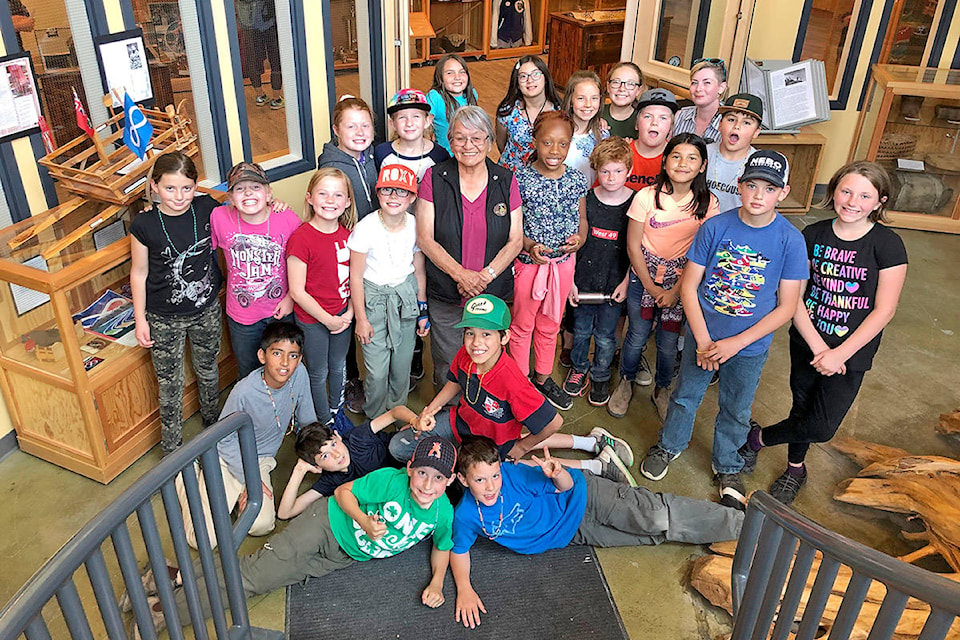From trying their hand at making Indigenous and Western jewelry crafts, to getting personal tours from the likes of respected Esket elder Cecilia DeRose and the ever-knowledgable Mary Forbes, Grade 4/5 students from Chilcotin Road Elementary School were a few of the lucky ones able to be a part of a new school program offered by the Museum of the Cariboo Chilcotin.
“It’s going very well,” said mueum coordinator Joe Borsato of the new program. “It has been a pleasure to offer Indigenous programming in partnership with Cecilia DeRose. There have also been so many great anecdotes with students finding their families’ artifacts in the Museum exhibitions. Two students found out that they were distantly related because they share a common ancestor whose story was in the Museum. Students regularly approach us with excitement during the tours when they find artifacts that interest them.”
Borsato said since moving to the Tourism Discovery Centre in 2017 the museum has been working hard to expand its educational programming ‘to continue to provide meaningful educational content for the next generation.’
Read More: Museum of the Cariboo Chilcotin sees 500 per cent increase in visitors
The school program involves crafting and interpretive tour sessions with elementary student classes. In 2018 the Museum started the program to deliver both traditional guided tours as well as interactive crafts. The Museum partnered with the Potato House, a fellow heritage organization in Williams Lake, and local Secwepemc elder Cecilia DeRose to help deliver the program using their heritage expertise.
Borsato said there is no cost to teachers for booking the sessions and crafts include traditional beading and belt buckle design. Some of the crafts also feature all reusable materials.
“The crafts allow students to connect the ‘old’ with the ‘new’ since many Indigenous people in the pre-contact period and also early settlers had to make their own clothes and jewelry, often with limited materials.
Borsato said with funding generously provided by a grant from the Province of British Columbia, the museum was able to offer ten sessions in spring 2019.
“In terms of student numbers, once these ten sessions are completed we will have had at minimum 250 students attend our sessions. This is a fairly significant number for us and there is a waitlist of five classes so it indicates that there is an appetite for this content.”
Borsato said the hope is that, if the program is well received and funding is available, it will be continued in future years.
Do you have a comment about this story? email:
editor@wltribune.com
Like us on Facebook and follow us on Twitter.
